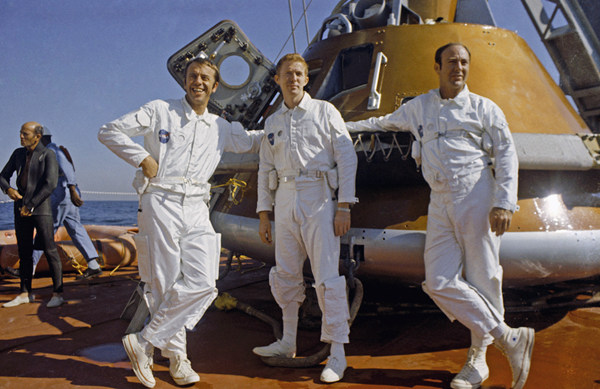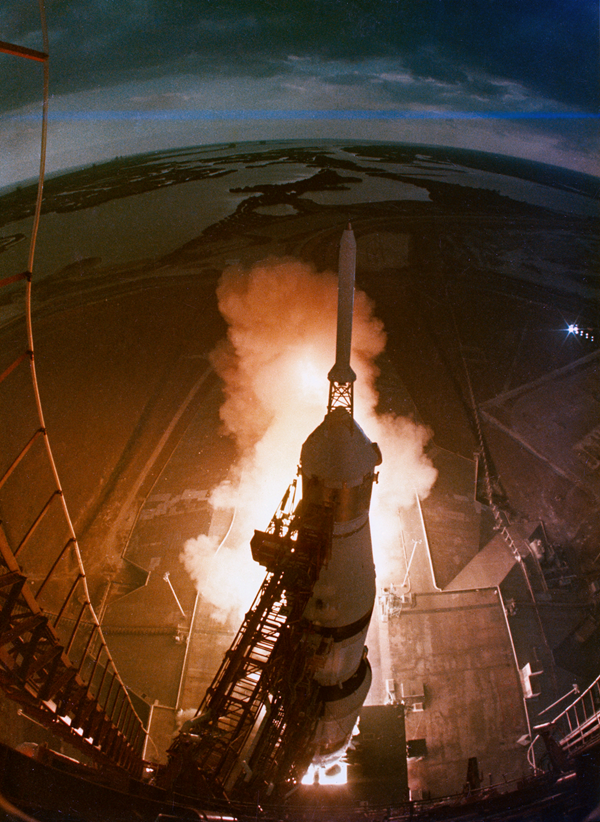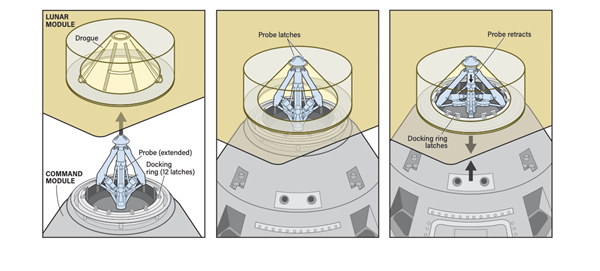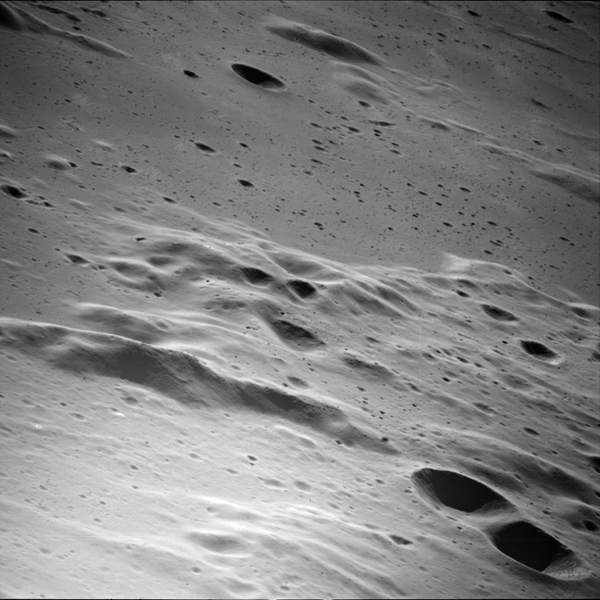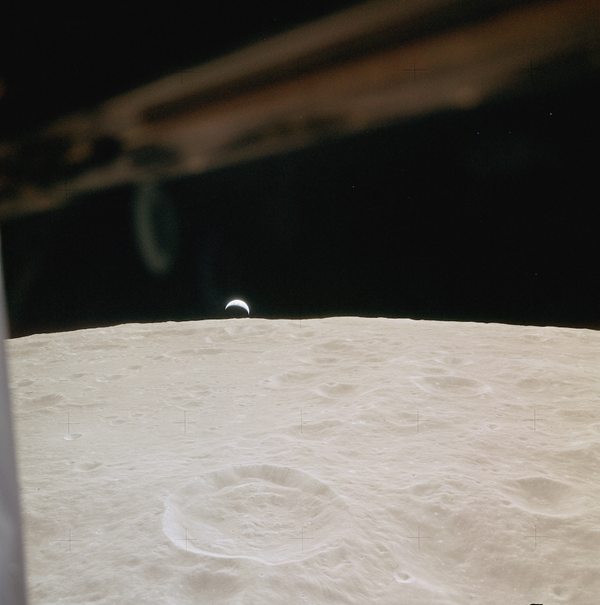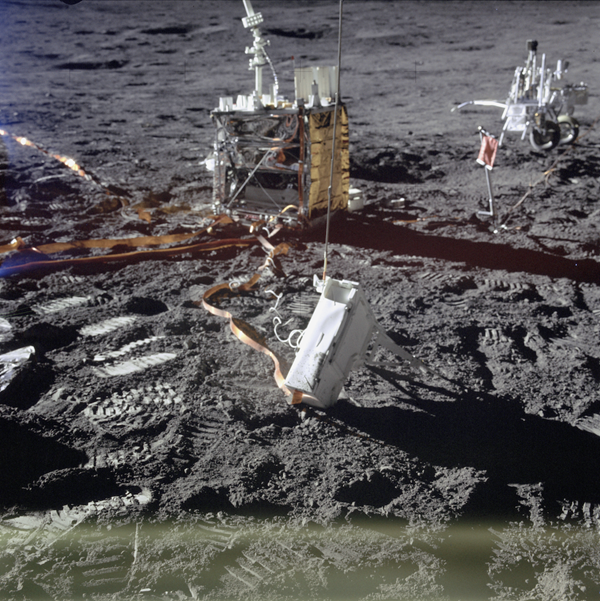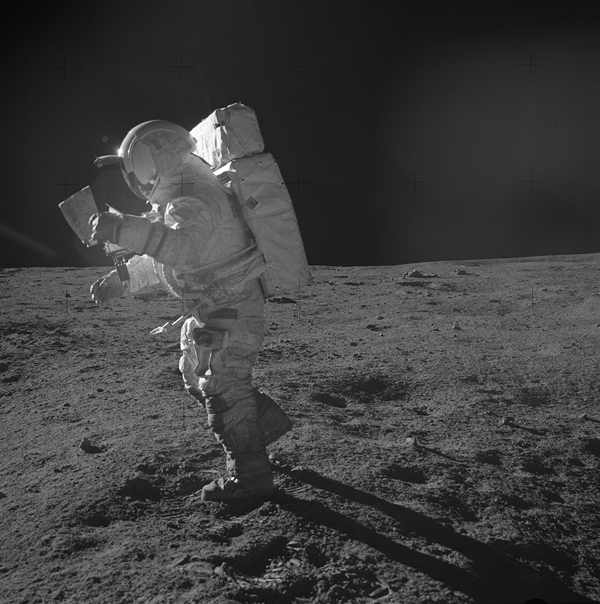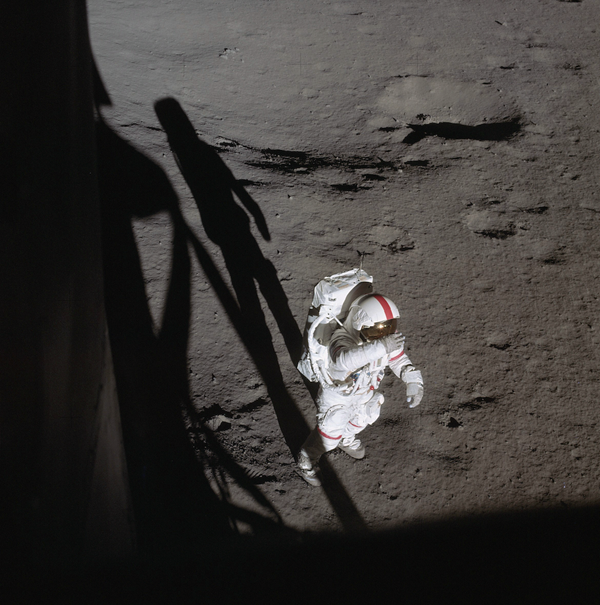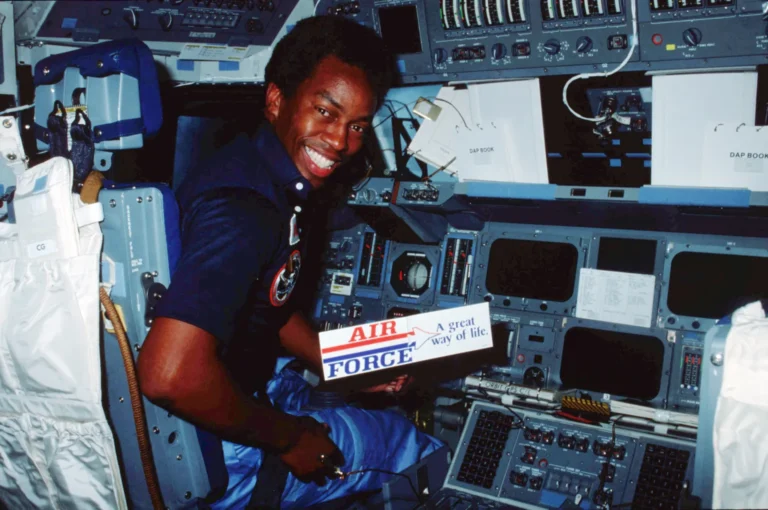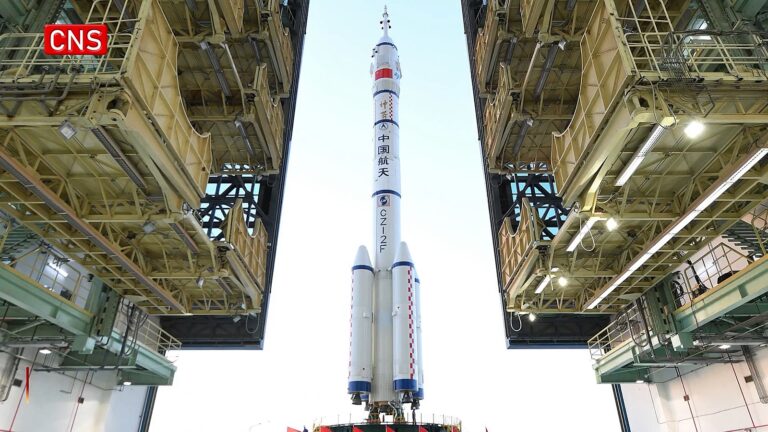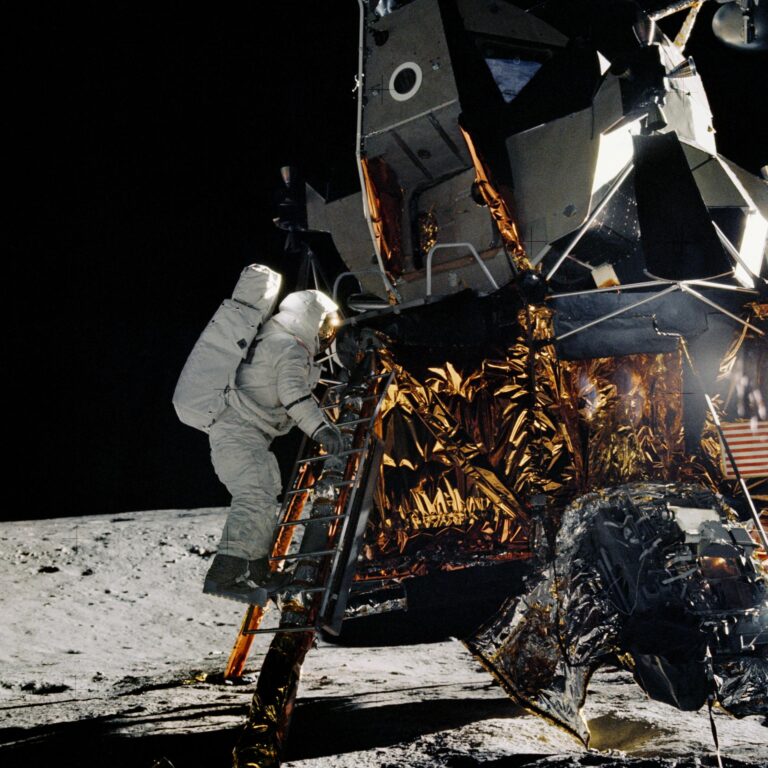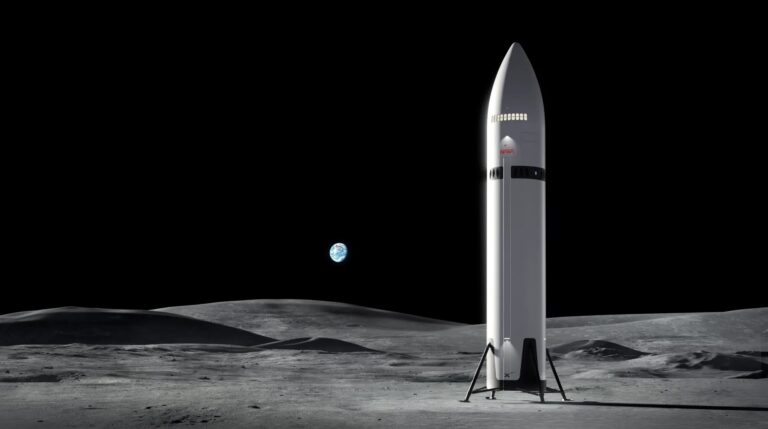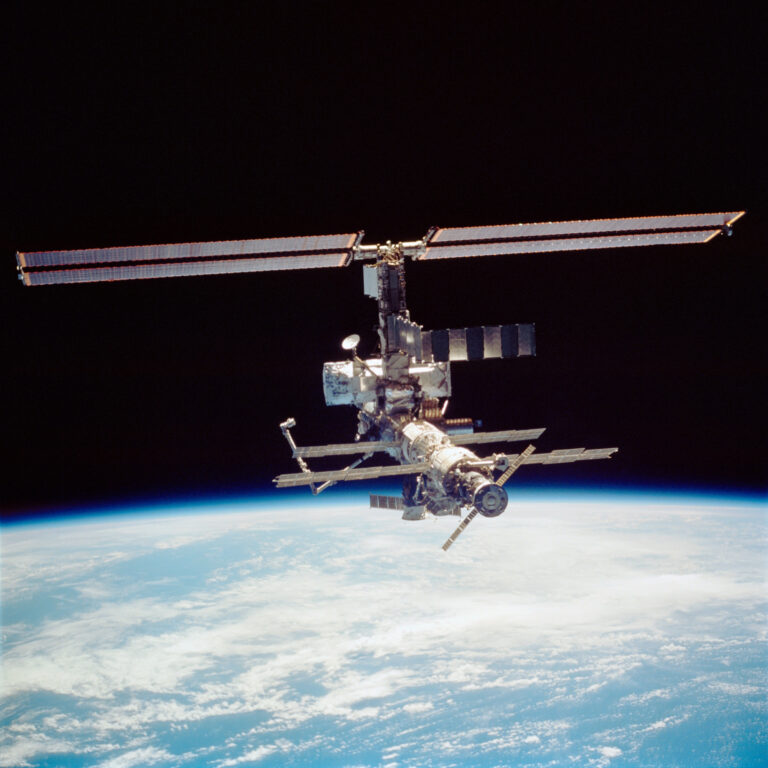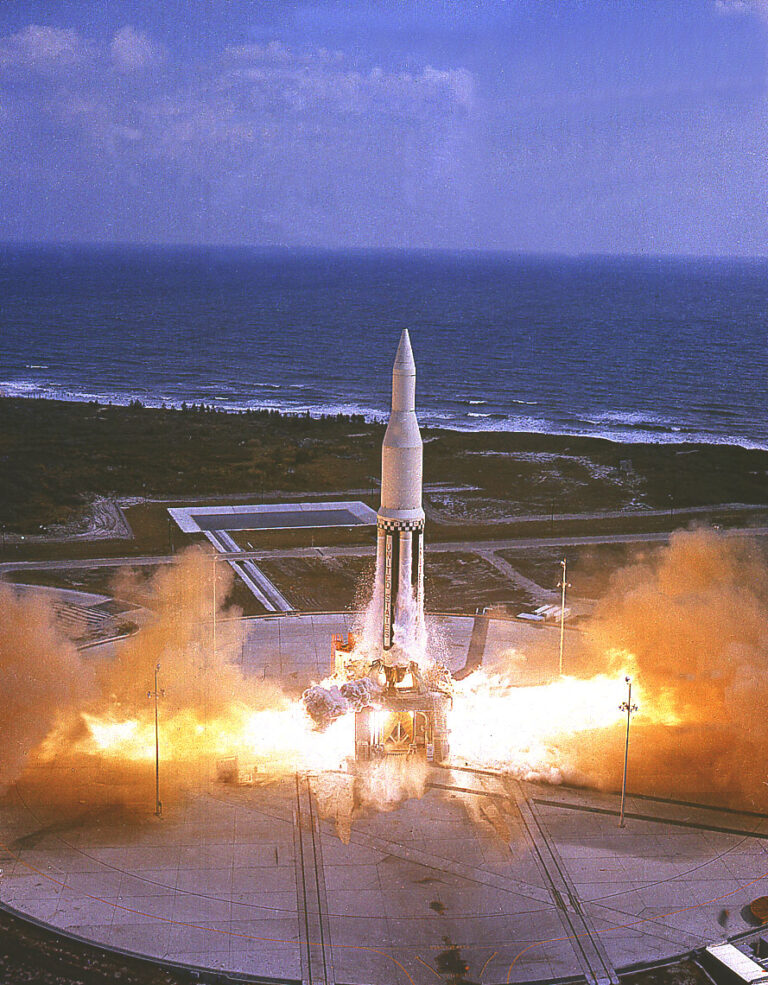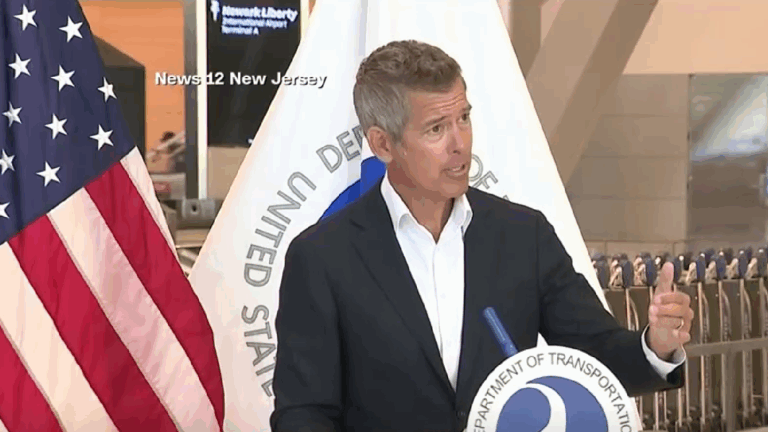Key Takeaways:
- Apollo 14 served as a pivotal recovery mission for NASA, re-establishing confidence in the Apollo program following the near-catastrophe of Apollo 13 and operating under significant programmatic and budgetary pressures.
- The mission's primary scientific objective was to collect lunar samples from the Fra Mauro highlands, particularly around Cone Crater, to provide insights into the early history of the solar system.
- The crew, led by Commander Alan Shepard in his return to flight, successfully overcame multiple critical technical malfunctions, including persistent docking probe failures, an intermittently activating Lunar Module abort button, and a stuck landing radar, through real-time troubleshooting by ground control and precise astronaut execution.
- Shepard and Lunar Module Pilot Edgar Mitchell executed the most accurate lunar landing to date and gathered 94 pounds (43 kilograms) of lunar samples, despite navigational challenges during their extravehicular activity to Cone Crater.
That could have been the mantra for Apollo 14 — a mission that marked a triumphant comeback for NASA after the near-catastrophe of Apollo 13.
Apollo 14 was originally slated to land at Littrow Crater in October 1970. But after Apollo 13 was forced to abort its mission when an oxygen tank exploded en route to the Moon, NASA decided to take another shot at 13’s original landing site in the Fra Mauro highlands. The stakes were high for the entire Apollo program: Two planned Apollo missions had already been canceled due to budget cuts. Another failed mission could end the program.
The scientific highlight of the landing site was the 1,000-foot-wide (305 meters) Cone Crater; geologists hoped the astronauts could find around its rim scattered rocks and boulders that had been blasted out by the impactor. Such samples, excavated from the Moon’s depths, could provide vital insight into the early history of the solar system.
Apollo 14 also marked a return to flight for its commander, Alan Shepard. The first American to fly in space, Shepard had been grounded two years after his historic 1961 flight by intense bouts of vertigo due to Ménière’s disease, a condition caused by excess fluid in the inner ear. After a successful 1969 surgery to drain the fluid, Shepard was cleared to fly again and added to the Apollo roster. Alongside him were two rookies: Lunar Module Pilot Edgar Mitchell and Command Module Pilot Stuart Roosa.
Though Apollo 14 was a success, it wasn’t without some intense troubleshooting of its own. Multiple times, the crew faced technical gremlins that could have forced an abort, only to be saved by the ingenuity of controllers and engineers on the ground — and their own flawless execution.
Though none of the crew are still alive, transcripts and recordings can still bring the mission back to life. Here’s the story of Apollo 14 in their words.
Apollo 14 became the first (and only) Apollo mission to have its launch delayed by weather, as an afternoon rain shower on Jan. 31, 1971, pushed back the scheduled liftoff by about 40 minutes. But once the Saturn V rocket engines finally ignited just before 4:03 P.M. EST, the launch and ascent were textbook-perfect.
Roosa: Liftoff. Clock start.
Shepard: The clock start?
Roosa: Beautiful!
Ronald Evans, Launch Control Center: Clear the tower!
Shepard: Tower clear. Roll and pitch start. Oh! Look at that —
Gordon Fullerton, Capsule Communicator (CapCom), Mission
Control: Roger, you have good thrust in all five engines.
Shepard: Beautiful.
Roosa: Go, baby, go!
Mitchell: She’s going, she’s going. Everything’s good.
Roosa: Let’s set a record, shall we?
Shepard: OK.
Roosa: All right.
Mitchell: Slow and easy.
Roosa: OK. And we’re going to start.
Shepard: OK [garbled].
Roosa: Sweaty-palm time.
Mitchell: OK. At 59:50, CMS MODE, AUTO.
Roosa: Sweaty-palm time.
Mitchell: Oh, no, just do it slow and easy.
Roosa: Oh, no. I just keep mumbling that.
Mitchell and Roosa: OK.
The maneuver seemed to come off as planned. But when the CM docking probe made contact with the drogue mounted to the LM, the probe’s spring-loaded latches failed to snap into place. Roosa applied forward thrust and made contact a second time, but it still didn’t latch.
Roosa: OK, Houston. We’ve hit it twice, and sure looks like we’re closing fast enough. I’m going to back out here and try it again.
Fullerton: Roger.
Roosa’s third attempt also failed to latch.
Roosa: Well, there goes the record.
Mitchell: Don’t worry about it. Let’s get him picked up.
Roosa: OK. Man, we’d better back off here and think about this one, Houston.
After checking some circuit breakers to ensure electrical power was reaching the probe, Roosa readied for a fourth try. This time, Houston suggested holding forward thrust after contact for three seconds to try and secure the probe latches.
Roosa: And here we come in again.
Fullerton: Roger.
Roosa: 1, 2, 3, 4 — son of a b—-, nothing! OK, Houston. I hit it pretty good and held [forward thrust for] four seconds on contact, and we did not latch.
Fullerton: Roger. We’re seeing it all on TV here.
Roosa: [Sigh.] S—. [Garbled] one more time.
After a fifth try failed, Houston suggested that Roosa make contact with the drogue, continue to thrust forward, and, even if the probe didn’t achieve a “soft dock,” retract the probe in the hopes that some of the 12 tunnel latches would snap into place.
Mitchell: About 6 feet out. [Pause.] About — 2 feet.
Roosa: About a foot. Here we go. OK, RETRACT.
Shepard: Nothing happened.
Roosa: Nothing?
Shepard: I don’t know.
Suddenly, the latches engaged in a series of loud snaps.
Shepard: I got — got a barber pole. [A diagonal-striped “barber pole” status indicator meant an action was in progress.] We got a hard dock.
Mitchell: We got some [latches], Houston.
Fullerton: Roger.
Roosa: I believe we got a hard dock, Houston.
Fullerton: Outstanding.
Roosa: We got it.
But Mission Control noticed something strange: Their telemetry showed the LM’s “abort” button had been activated — even though none of the astronauts reported pushing it.
Fred Haise (CapCom): Ed, could you tap on the panel around the abort pushbutton and see if we can shake something loose? [Long pause.]
Mitchell: Yeah, Houston, it just changed while I was tapping there.
Haise: You sure tap nicely.
Mitchell: I’m pretty good at that.
Haise: OK. Antares, we’d like to kind of sit here a minute and watch it.
Evidently, the switch was contaminated — a small chunk of metal was floating around inside it, intermittently shorting the circuit and triggering the abort button. This was a potentially mission-ending problem — if it happened during the descent, the computer would cancel the landing, jettison the descent stage, fire the ascent engine, and lift Shepard and Mitchell back to lunar orbit.
With the mission hanging in the balance and just three and a half hours before the landing was set to begin, MIT software engineer Don Eyles devised a way for the astronauts to hack the guidance computer and disable the abort button. Haise radioed the instructions up to the crew.
This modified a flag in the computer’s memory that tracked which program the computer was running, changing it from P63 — the descent program — to P70/71, the abort programs. This fooled the computer into thinking an abort was already in progress — preventing it from actually starting an abort if the button was triggered. However, it also disabled several descent routines the computer was supposed to run. Shepard would have to fly the LM manually while Mitchell performed the rest of the fix: disabling the computer’s abort-checking, restoring the descent guidance routines, and resetting the flag to the descent program.
Haise: OK. After ignition at plus 26 seconds on page 6, we need MANUAL THROTTLE UP. [This instructed Shepard to manually zoom the throttle to maximum.] […] After we get by THROTTLE UP, it’s VERB 25 NOUN 07 ENTER; 101 ENTER; 200 ENTER; 01 ENTER. And this will enable guidance and give you steering at that time. […] OK, the next entry: VERB 25 NOUN 07 ENTER; 105 ENTER; 400 ENTER; 0 ENTER. […] This’ll disable [the abort programs] P70, P71. OK, the next entry: VERB 21 NOUN 01 ENTER; 10 10 ENTER; 77 ENTER. […] This gets us [back] into P63 […] which gets us right for landing radar.
The last command would ensure that the guidance computer was prepared to accept input from the landing radar, which provided crucial altitude information in the latter stages of the landing.
With less than 15 minutes before the descent was set to begin, the astronauts were still sorting out the complex sequence with Houston and each other.
Mitchell: OK, let me read this [back]. At four minutes [before the burn], that goes in. [And then at] ignition plus 26 [seconds], MANUAL THROTTLE [up].
Shepard: Rog.
Mitchell: And [then] I’ll put these other calls in just as quick as I can get them in.
Shepard: Yes. One right after the other.
After 10 final minutes of preparations, the astronauts were ready to begin.
Shepard: And Antares is standing by for a [Powered Descent Initiation] go. [Pause.]
Haise: And Antares, Houston. You’re go for Fra Mauro.
Mitchell: Good show, Freddo. Thank you.
Shepard: Thank you. You troops do a nice job down there.
Mitchell: That was beautiful.
Mitchell: Down to 32,000 [feet altitude]. We should be getting landing radar in very soon. […] Come on radar, get the lock on. [Pause.] Come on, radar! […] [Garbled] can’t get the radar in. […]
Haise: OK, six [minutes] plus 40 [seconds] is throttle down, Antares.
Mitchell: Roger, Houston. We still have ALTITUDE/VELOCITY lights. [This meant the landing radar was still not returning any data.]
Haise: Roger.
Shepard [to Mitchell]: I’ll bet they know that.
Mitchell: What?
Shepard: I’ll bet they know that.
Finally, Houston radioed with a potential solution.
Haise: Antares, Houston. We’d like you to cycle the landing radar breaker.
Mitchell: Cycle the landing radar breaker.
Shepard: OK, been cycled. [Long pause.]
Mitchell: Come on in! [Long pause.]
Then, the radar finally responded.
Mitchell: OK!
Shepard: Velocity light [is out]. VERB 57, ENTER. [This triggered the option for the computer to accept the radar data to inform its guidance.] How’s it look, Houston? [Pause.]
Mitchell: Can we accept?
Haise: OK. We’d like to accept the radar.
Shepard: OK, pro[ceeding]. Converging, pro.
Mitchell: Great. Great. Whew! That was close.
Shepard: There’s Cone Crater. Right on the money.
Mitchell: And there it is!
Shepard: Right on the money!
Mitchell: Hot damn. Right on the money!
But as they approached the surface, the astronauts realized that the computer’s target was actually slightly off — it was aiming just short of a smaller crater, named Triplet. Shepard decided to take manual control and fly the LM past Triplet to the designated landing site.
Mitchell: OK, you can move on forward. You’re barely crossing North Triplet. Barely crossing North Triplet. Six percent fuel. OK, 150 feet. There’s Descent Quantity light [a low fuel indicator].
Shepard: Starting down, starting down.
Mitchell: OK. It says 90 feet, 4 feet per second, 5 feet per second down. […] Looking great.
Shepard: OK.
Haise: Sixty seconds [of fuel available].
Shepard: We’re in good shape.
Mitchell: OK. Fifty feet down, 50 feet.
Shepard: We’re in good shape, troop.
Mitchell: Three feet per second. Forty feet. Three feet per second. Thirty. Three feet per second, looking great. Twenty feet. Ten … Three feet per second — contact, Al!
Shepard: Great, PRO, AUTO, AUTO.
Mitchell: We’re on the surface!
Shepard: OK, we made a good landing!
Haise: Roger, Antares.
Mitchell: 413, plus 10,000. [This stored the craft’s landing attitude in the abort guidance computer in case an emergency departure was needed.] That was a beautiful one.
Shepard: OK, we’re slightly off. We landed on a slope, but other than that, we’re in great shape — right on the landing site.
Shepard and Mitchell had managed the most accurate lunar landing thus far — just 87 feet (27 m) from the target. Still, as they surveyed the surrounding craters and ridges, they struggled to get their bearings.
Mitchell: OK Houston, the undulations are far too complex for me to try to describe them right now. […] Suffice it to say that I think there is more terrain, more relief here, than we anticipated from looking at the maps.
Shepard: There’s a hell of a lot of relief inside the cabin, I’ll tell you that.
On their second day on the Moon, Shepard and Mitchell set out to reach the rim of Cone Crater — more than a mile (1.6 kilometers) away and 300 feet (90 m) higher than their landing site. A boulder field identified from satellite photos directly along the south crater rim was expected to contain the deepest — and therefore the oldest — ejecta from the crater. But navigation wasn’t easy. The undulations that Mitchell had described gave him the sense of being lost in a field of sand dunes, even as the slope got steeper.
Shepard: Well, we haven’t reached the rim yet.
Mitchell: Oh boy, we got fooled on that one. I’m not sure that was Flank [Crater] we were at a minute ago, either. [Heavy breathing.] Wait a minute — yes, it is. The rim’s right here. That’s the uh, that’s the east [ridge], uh … [Heavy breathing.] … Little shoulder running down from the Cone. That’s Flank over there. [Heavy breathing.] We’re going to hit it on the south side. We’ll have to move on around of it. This looks like easy going right here. [Heavy breathing.] See, there’s the boulder field that shows in the photograph — it’s right up ahead of us. […]
Haise: OK, Al and Ed. They’d like you to take another stop here.
Mitchell: OK. [Heavy breathing.] We’re really going up a pretty steep slope here.
Haise: Yeah, we kind of figured that from listening to you.
With time ticking away and more sample collections scheduled on the return trip, Shepard suggested abandoning the attempt to scale Cone Crater and settling for sampling some of the nearby boulders, but Mitchell lobbied to press on.
Shepard: And what I’m proposing is perhaps we use that [boulder field] as the turnaround point. It seems to me that we spend a lot more time in traverse if we don’t, and we don’t get very many samples. […] I think, Freddo […] the best thing for us to do is to get up here and document samples of what I feel pretty sure is Cone ejecta. […]
Haise: Roger, Al.
Shepard: [referring to two nearby boulders] Well, let’s head for these two babies up here. [Long pause.]
Shepard: Yeah.
Mitchell: I’d, uh … [Pause.] No, let’s keep going around this crater, but … [Pause.] Think that’s right here.
Shepard: [Sounding skeptical.] Well, maybe. I thought we’d get those boulders up there, Ed. They —
Mitchell: [Quickly.] Yup.
Shepard: — undoubtedly came from —
Mitchell: Yeah, let’s head right for that boulder field at the top. I think we’ll be where we want to be.
Shepard: Right here.
Mitchell: Pardon?
Shepard: Right here.
Mitchell: Yeah, right — clear on up at the top, you mean.
Shepard: No.
Mitchell: Huh?
Shepard: I don’t think we’ll have time to go up there.
Mitchell: Oh, let’s give it a whirl! Gee whiz, we can’t stop without looking into Cone Crater!
Shepard: Well …
Mitchell: [Garbled] everything if we don’t get there.
Shepard: I think we’ll waste an awful lot of time traveling and not much documenting.
Mitchell: Well, the information we’re going to find, I think, is going to be right on top. […] Freddo, how far behind our timeline are we?
Haise: OK. The best I can tell right now … about 25 minutes down, now.
Mitchell: OK.
Shepard: We’ll be an hour down by the time we get to the top of that thing. You got six samples.
Mitchell: Well … I think we’re going to find what we’re looking for up there.
Haise: OK, Al and Ed. In view of your assay of where your location is and how long it’s going to take to get to Cone, the word from the Backroom is they’d like you to consider where you are [to be] the edge of Cone Crater. [Pause.]
Mitchell: [I] think you’re finks! [Long pause.]
Mitchell had prevailed for the moment. But as the slope leveled off and the edge of the crater remained elusive, Houston finally called time on their climb.
Mitchell: This big boulder right here [on the map], Al, which stands out bigger than anything else — ought to be — we ought to be able to see it.
Shepard: Well, I don’t know what — the rim is still way up there, from the looks of things.
Haise: And, Ed and Al, we’ve already eaten in our 30-minute extension and we’re past that now. I think we’d better proceed with the sampling and continue with the EVA.
Mitchell: OK, Freddo.
Shepard: OK. We’ll start with a pan from here. I’ll take that.
Mitchell: All right, I’ll start sampling.
In fact, Shepard and Mitchell were only about 65 feet (20 m) from the rim of Cone Crater. “We just didn’t realize how close,” Mitchell later said. “It was just out of sight across the next rise a few yards away.”
Before the pair clambered back into the LM for the final time, Shepard had one last trick up his sleeve: a specially prepared golf club and two golf balls that he had brought with him to take the most famous bunker shot in the solar system.
The Apollo 14 crew splashed down Feb. 9 in the South Pacific and was recovered by USS New Orleans. In the end, Shepard and Mitchell gathered 94 pounds (43 kilograms) of lunar samples that would shed light on the early history of the Moon. But on top of the invaluable science, the mission showed that NASA and the Apollo program were back in business.

